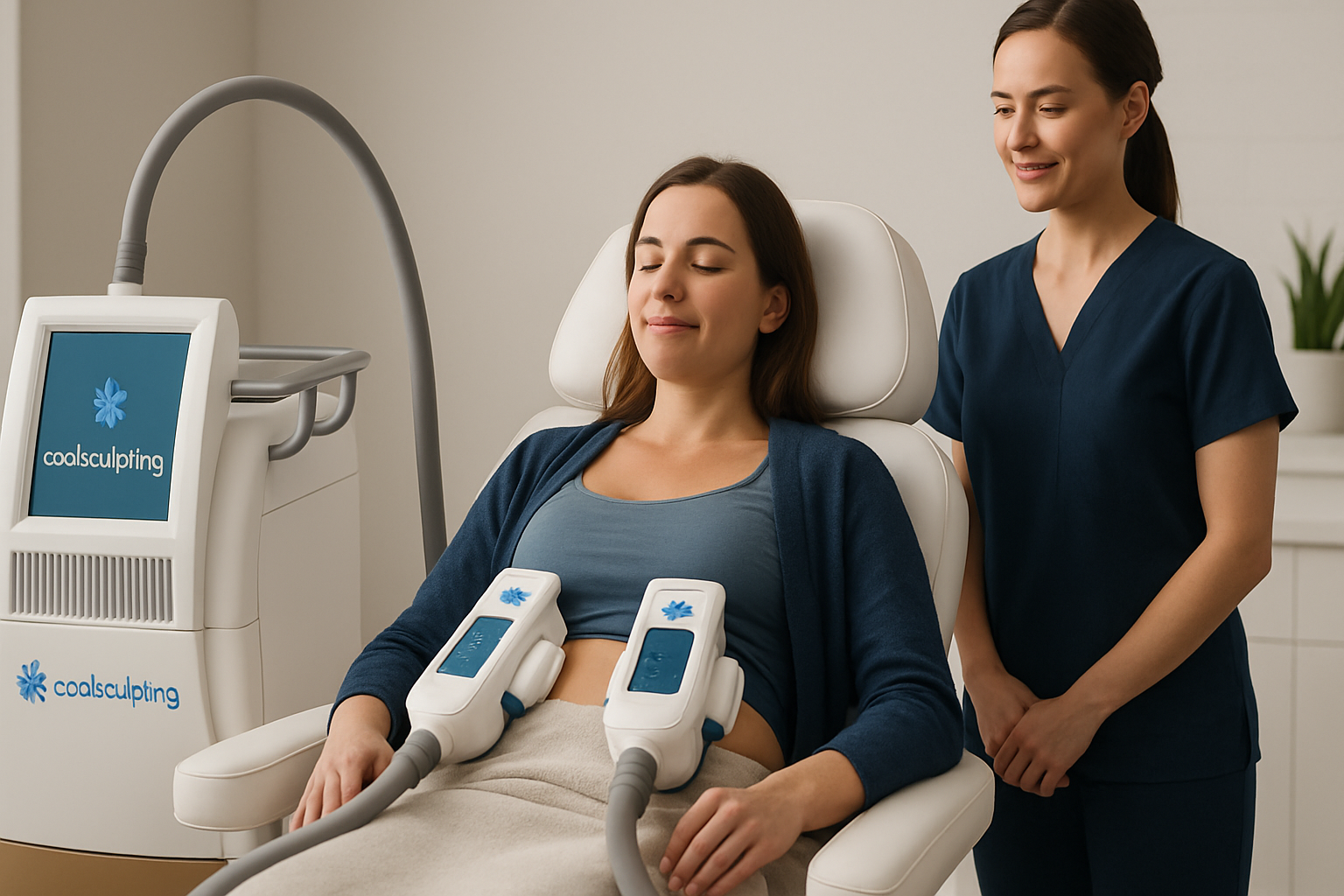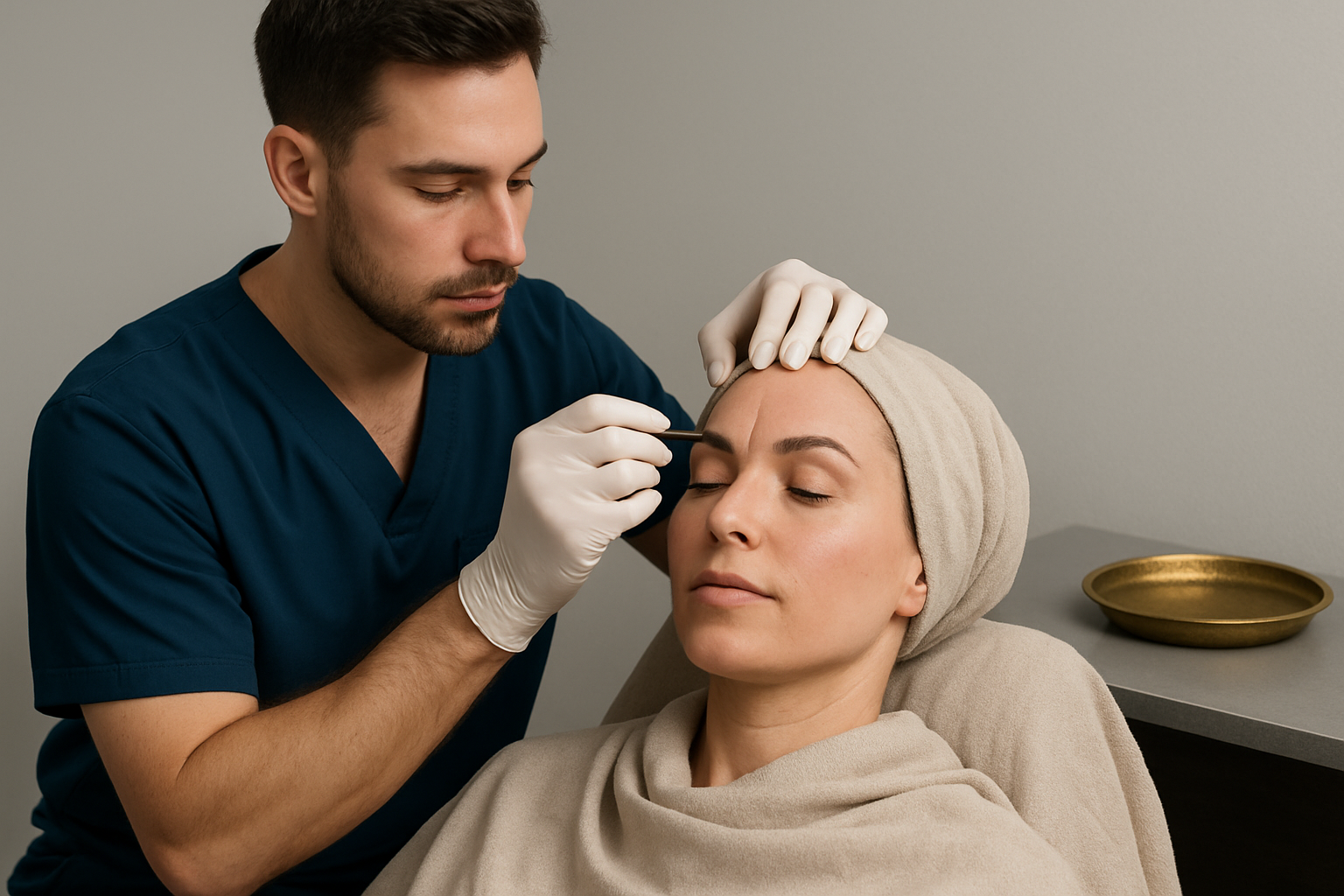Sun exposure, age, and genetics can leave visible marks on your skin—think sunspots, redness, uneven tone, and fine lines. Light-based treatments have become popular solutions, but two of the most talked-about options are photofacial and IPL (Intense Pulsed Light). At first glance, they may sound the same, but these therapies have important differences that affect results. If you’ve been wondering whether a photofacial or IPL is right for your skin concerns, this guide breaks it all down for you.
Jump To:
TLDR – Quick Guide
- Photofacial is a broad term for light-based skin treatments, often referring to IPL but sometimes also LED or laser-based therapies.
- IPL uses multiple wavelengths of light to target sun damage, broken capillaries, and pigmentation.
- Both treatments improve skin tone and reduce redness, but IPL is typically stronger and more versatile.
- The right choice depends on your skin type, concerns, and how aggressive you want the treatment to be.
- Always consult with a licensed provider before starting light-based therapy.
What Is a Photofacial?
A photofacial is a general term used to describe treatments that use light energy to rejuvenate the skin. This can include LED photofacials, which are gentler and focus on overall skin health, or IPL-based photofacials, which penetrate deeper to treat pigmentation and vascular issues. Because the term is broad, patients should always clarify what type of light-based technology is being used during their treatment.
What Is IPL?
Intense Pulsed Light (IPL) is a non-invasive treatment that delivers multiple wavelengths of light to the skin. Unlike lasers, which use a single wavelength, IPL can target different chromophores in the skin simultaneously, making it effective for sun damage, redness, and age spots. Many providers use “IPL photofacial” and “photofacial” interchangeably, but IPL is the more precise and clinically targeted option.
Benefits of Photofacial Treatments
- Improved skin tone and clarity
- Stimulation of collagen production
- Reduction in redness and flushing
- Gentle, minimal downtime option for maintenance treatments
- Works well for patients looking for gradual, natural results
Benefits of IPL Treatments
- Targets multiple skin concerns in one session (pigmentation, redness, broken vessels)
- More aggressive than LED photofacials, with longer-lasting results
- Treats larger areas quickly, such as the face, chest, and hands
- Can reduce the appearance of sunspots, age spots, and rosacea symptoms
- Provides noticeable improvement after fewer sessions compared to gentler treatments
Photofacial vs. IPL: How Do You Choose?
When comparing photofacial vs. IPL, the decision often comes down to your goals:
- Choose a Photofacial (LED): if you want a gentler treatment, minimal downtime, and gradual skin improvements.
- Choose IPL: if you want more dramatic results for sun damage, redness, and pigmentation, and are comfortable with mild redness or swelling after treatment.
Your provider will assess your skin type, lifestyle, and goals to recommend the right option for you.
Safety, Timing, and Results
Both treatments are considered safe when performed by a licensed professional. Patients typically need multiple sessions, spaced a few weeks apart, for optimal results. While LED photofacials may require ongoing maintenance, IPL often delivers more significant, longer-lasting changes after a treatment series.
Key Takeaways
- Photofacial vs. IPL isn’t always a direct comparison—photofacial is a broad term, while IPL is a specific technology.
- Photofacials can be LED or IPL-based, but IPL is generally stronger and better for pigmentation and vascular issues.
- Both treatments improve redness, sun damage, and overall skin tone.
- The best option depends on your skin type, tolerance for downtime, and desired results.
- Always choose a licensed provider for safe, effective treatment.
FAQs
Are photofacials and IPL the same thing?
Not exactly. A photofacial is a general category of light-based treatments, while IPL is a specific technology. Many providers use the term “IPL photofacial” because IPL is the most common method.
How many sessions will I need?
For photofacials, you may need ongoing treatments for maintenance. IPL usually requires 3–5 sessions spaced a month apart, with results that last longer. The number of sessions depends on your skin condition and goals.
Is there downtime with these treatments?
LED photofacials have almost no downtime, making them great for busy schedules. IPL may cause temporary redness, swelling, or darkening of spots that flake off within a week. Most patients resume daily activities right away.
Which treatment is better for rosacea?
IPL is generally more effective for reducing redness and broken capillaries associated with rosacea. Photofacials can help with general skin tone but are less aggressive. A professional assessment ensures the right approach for sensitive skin.
Are the results permanent?
No light-based treatment permanently stops sun damage or aging. However, IPL offers longer-lasting improvements compared to LED photofacials. Maintenance treatments and sun protection extend the benefits.




